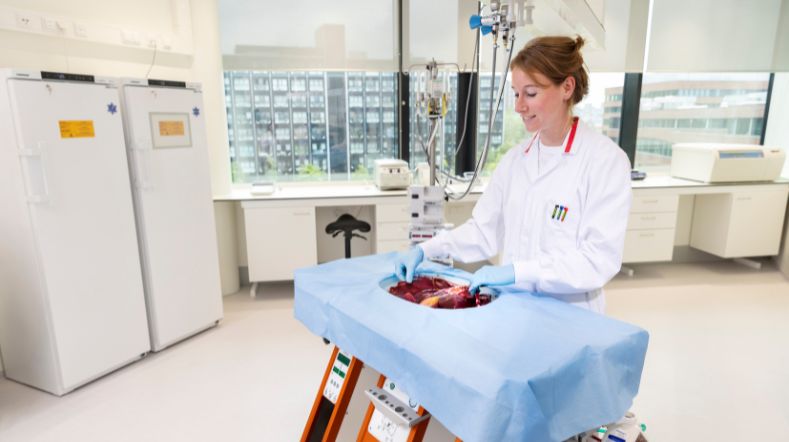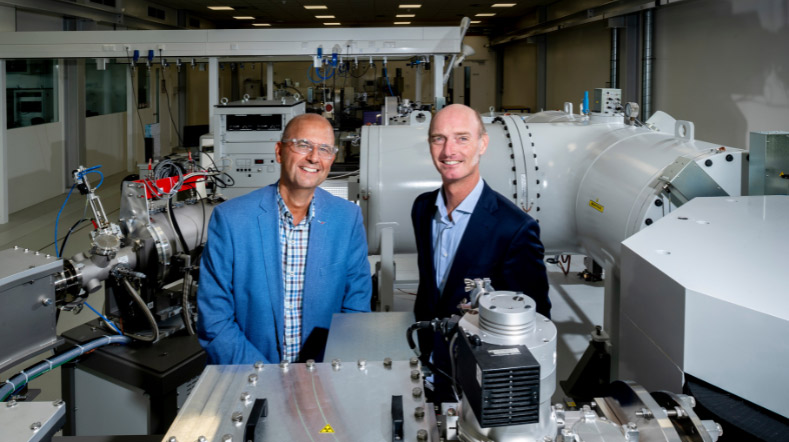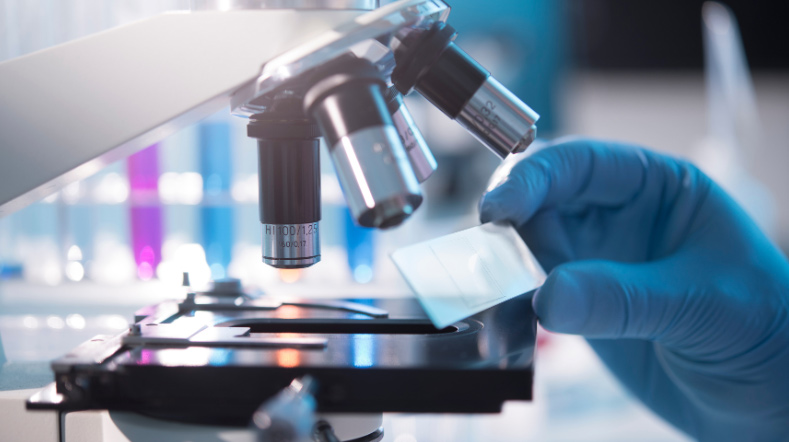
Time setters: reduce long waits for new medication with AMS
At TNO, we make a mark on our time. In this series, you’ll meet the TNO employees behind the innovation – the time setters. What do they do exactly and what impact does their work have on society? In this episode, we talk to time setter Wouter Vaes, researcher in microdosing and microtracer studies, about using AMS technology to speed up the development time of new drugs by years.
What is an Accelerator Mass Spectrometer?
‘When developing a new drug, the most important part is testing it on humans. After all, we first need to know how the body reacts. To properly track and detect the drug, for example in a test participant’s blood, urine or faeces, the drug has to be made radioactive. A particular dose of radioactivity is necessary, as otherwise it cannot be measured using conventional technology. But radioactivity is not exactly healthy.’
‘For that reason, at TNO we started taking measurements with the AMS, the Accelerator Mass Spectrometer. This advanced technology is much more sensitive than normal measuring equipment. It lets you reduce the radioactivity dose of your drug by a factor of 100, making drug development a more efficient process because you can conduct tests in humans at an earlier stage and know what the body does with the drug.’

‘The preparation of a blood sample initially took five days. That isn’t workable for the pharmaceutical industry. It needed to be faster.’
AMS already exists, so what is TNO’s innovation?
‘I once came across AMS and microdosing: administering very small doses to human volunteers. I was shocked by the ‘primitive’ blood sample preparation. It was totally out of date. The preparation of a blood sample initially took five days. That isn’t workable for the pharmaceutical industry, where large numbers of samples are involved. It needed to be faster.’
‘We collaborated with two companies to improve sample preparation. Together we carried out tests and after three years, it worked. Now we’ve developed a technique where preparation takes only 12 minutes. This brings the lead time within parameters acceptable to industry. A huge time saving!’

‘Thanks to our study, a pharmaceutical company can get a clear idea of how the body interacts with the drug more quickly.’
Development of 10 drugs successfully accelerated
‘We’ve now registered about 10 drugs that have been investigated by our AMS, which is obviously fantastic. The best example of a successful application? The case of a company that wanted to know how long three different substances remained in the blood. The substances disappeared too quickly. This was a microdosing study, in which we not only investigate using low radioactivity, as with AMS, but which is also low in terms of the amount of the substance.’
‘The outcome: all three substances under investigation were rejected based on the study. The pharmaceutical company benefits from clarity and any reason to reject a drug is important. Our study meant that they went back to the drawing board early in the development process. This saved them a huge amount of time and money. That’s the power of technology and I think that’s really cool.’
Drugs developed 2 years faster
With microtracer technology, we’ll help accelerate the drug development process by two years this decade.
The future of AMS in drug development
Around 45% of new drugs are usually aimed at fighting cancer or inflammation. We currently work with drugs containing small molecules, similar to those of paracetamol, for example. Modern cancer drugs are much more expensive and we want to tackle that, so we’re working on a new branch of the drugs sector. We hope to play a bigger role in that area in the future. In short: broadening the package.’
Become a time setter at TNO
Would you like to work on innovations that you can really use to create the future? If so, become a Time Setter like all TNO employees and make your mark on our time. This is our time.
Get inspired
Testing medicines outside the body: intestinal–liver–kidney model accelerates drug development


Preclinical ADME


TNO launches Peregrion to boost market impact of its technology that accelerates medicine development


PPP uncovers new insights into MASLD development


Translational preclinical efficacy models


